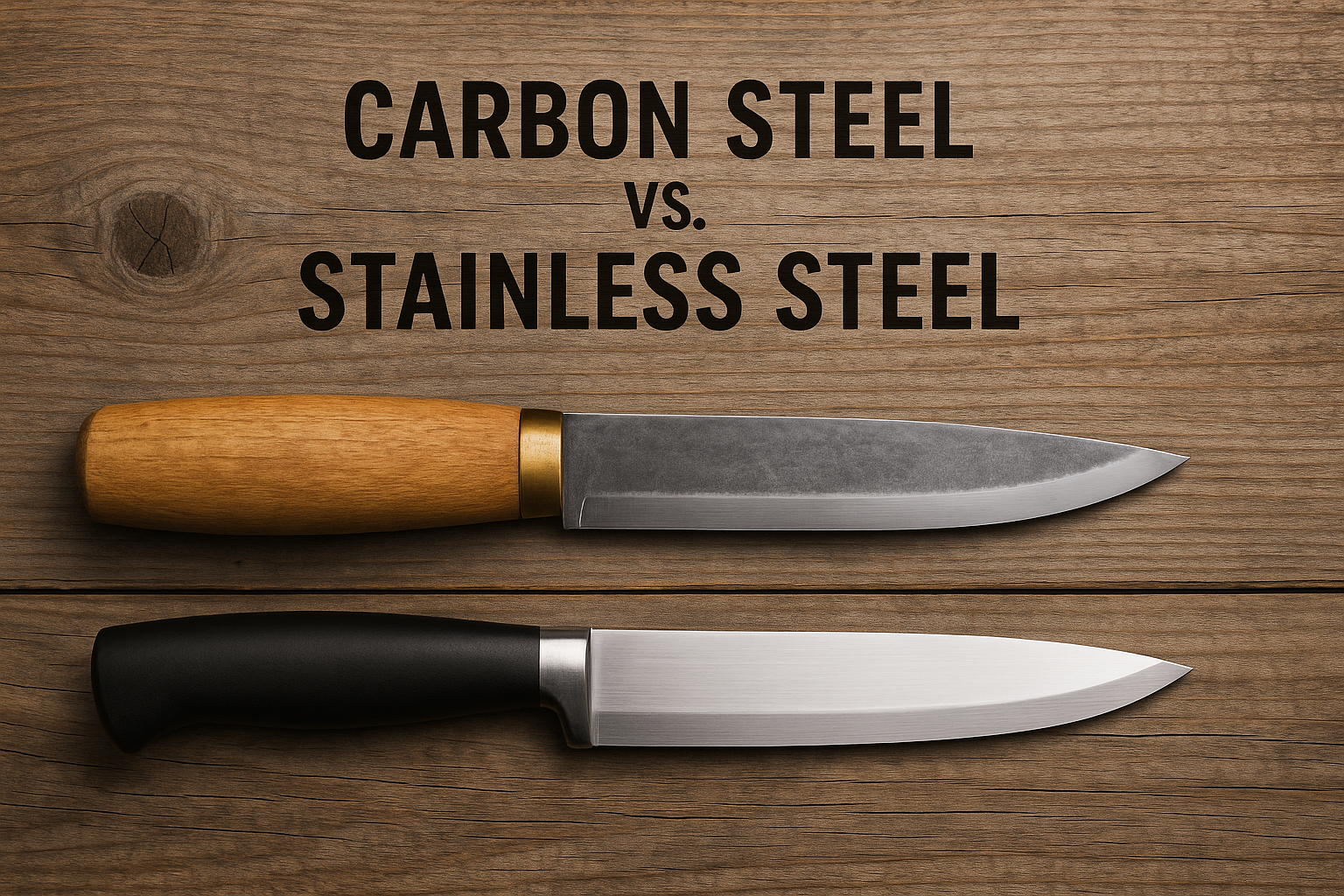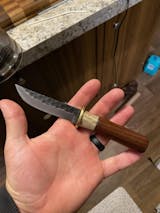Carbon Steel vs. Stainless Steel Knives: Which Blade Material Is Right for You?
When choosing a knife for bushcraft, carving, kitchen prep, or outdoor survival, the material—carbon steel vs stainless steel—is key. At Ragweed Forge, we offer premium knives in both types, including Mora, Helle, and Old Hickory blades. This guide helps you compare sharpness, corrosion resistance, maintenance, and long-term performance to find your ideal blade.
1. What Is Carbon Steel? Pros, Cons and Best Uses
Pros
-
Superior sharpness: High-carbon blades sharpen to a finer edge (55–65 HRC).
-
Easy to sharpen: Sharpening tools like stones or strops work fast.
-
Excellent toughness: More resistant to chipping under lateral stress.
-
Develops patina: Forms a natural protective grey-black coat that many enthusiasts love.
Cons
-
Rust‑prone: Can corrode if not dried/oiled right away.
-
High maintenance: Requires cleaning, drying, and periodic oiling.
Best for:
-
Carving (e.g., spoon making), bushcraft, and chefs who crave ultra-sharp edges and don’t mind maintenance.
2. What Is Stainless Steel? Features, Trade‑Offs and Ideal Usage
Pros
-
Rust and corrosion resistant: ≥12% chromium resists moisture and acidity.
-
Low maintenance: Tolerates occasional moisture with minimal care.
-
Durable and chip-resistant: Softer, more flexible blade less prone to fractures.
-
Retains shine: Polish holds longer—great aesthetic for kitchen sets.
Cons
-
Harder to sharpen: Chromium-rich steels can be tougher to hone.
-
Variable edge retention: Depending on alloy (e.g., VG‑10, SG‑2 are exceptions).
Best for:
-
Everyday kitchen knives, outdoor use in wet conditions, and users prioritizing ease of care.
3. Side‑by‑Side Comparison: Key Differences
| Feature | Carbon Steel | Stainless Steel |
|---|---|---|
| Sharpness | Razor-edge, excellent edge retention | Sharp but slightly less; depends on alloy |
| Edge retention | Excellent, especially in soft foods | Good, but may require more frequent honing |
| Ease of sharpening | Easier to sharpen | Harder—may need quality stones or services |
| Rust resistance | Poor without care; patina develops | Excellent corrosion resistance |
| Durability | Hard and tough, can chip if dropped | Tougher and more resistant to impact |
| Maintenance | High – drying, oiling, patina upkeep | Low – wash and towel dry |
| Best uses | Precision carving, bushcraft, knives for pros | Everyday kitchen, camping, low-maintenance users |
4. Choose Based On Application & Care Commitment
-
Go carbon steel if: You value extreme sharpness, edge control, and are okay with maintenance routines.
-
Choose stainless steel if: You want a durable, low‑maintenance knife for daily kitchen use or wet conditions.
-
Hybrid options: Consider high-carbon stainless steels (e.g., VG‑10) or laminated C/S blades—blending sharpness and rust resistance.
5. Explore Premium Knives at Ragweed Forge
Our curated collection includes:
-
High-carbon kitchen knives (Old Hickory, Mora) for superior sharpness.
-
Rust-resistant stainless options ideal for outdoor use.
-
Hybrid models offering the best of both worlds.
Browse our full range of bushcraft, carving, and kitchen knives to find your perfect blade.






2 comments
Hornyman
Thank you, Redbeard, for this primer on blade steel types. Dad 1st a master machinist then matallurgical engineer, I’m fortunate to have learned much about steel from him. Yesteryear’s stainless steel considered too week to w/stand firearms pressures, he would have been amazed at today’s high carbon SS blades that combine the best of both steels w/few, if any, downsides. At least 12% chromium is chief metal, commonly followed by ~ 8% nickel, that’s alloyed w/ iron & varying % of any or all elements molybdenum, titanium, columbium, aluminum, nitrogen, phosphorous, sulphur, & selenium. Though astronomically expensive, Damasteel is my current favorite.
Dean Warner
Dear,Ragweed forge,purchased a knife from you,very well packaged for transport,beautiful knife as viewed on website,will be back for more. Hey Guys Thank You! Challenged? look to JESUS He cares (1peter 5:7)